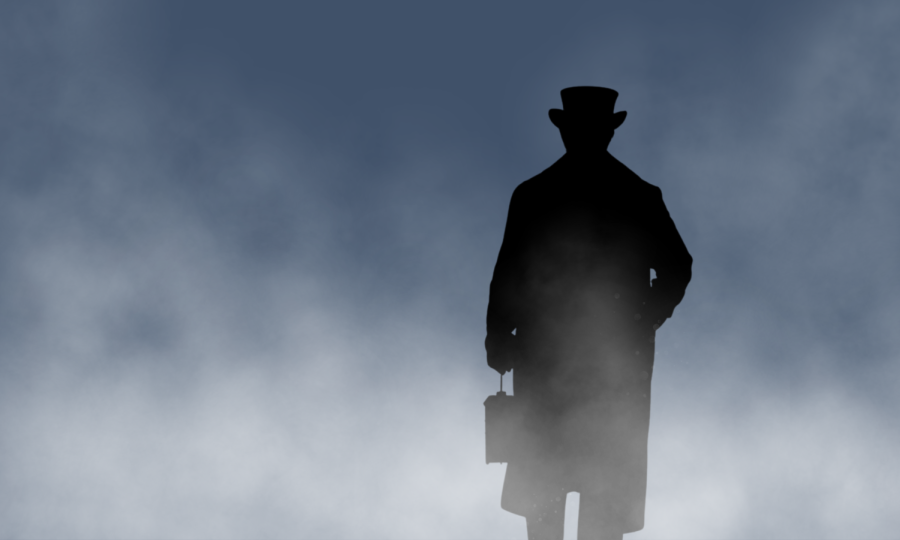Reel Thoughts: ‘The Pale Blue Eye’ is a good murder mystery with some significant flaws lurking under the surface
One of main strengths of “The Pale Blue Eye” is its stellar tone and immersion. The tone raises the stakes of the movie and quickly entices audiences.
January 17, 2023
Warning: This story contains spoilers.
Netflix original series and movies are quite an inconsistent bunch: For every “El Camino: A Breaking Bad Movie,” there is a “Resident Evil.” Luckily, “The Pale Blue Eye” bucks that trend with a solid — but not groundbreaking — murder mystery based on Louis Bayard’s novel of the same name.
The movie sports a truly unique premise about a series of gruesome murders at the U.S. Military Academy in 1830. Veteran detective Augustus Landor (Christian Bale) teams up with the future poet Edgar Allen Poe (Harry Melling) to catch a murderer, but all is not as it seems as they confront mounting evidence of mysterious satanic rituals.
Melling and Bale both do fantastic jobs making the characters come alive — each developing as exceedingly likable characters with plenty of depth — and establishing the relationship between Poe and Landor that is at the core of the film.
Unfortunately, this spotlight prevents most of the other characters from receiving the screen time they need to shine.
One of the film’s biggest flaws is the romantic subplot between Poe and Lea Marquis (Lucy Boynton). Since Marquis is given limited time on-screen, the audience cannot understand the bond the two characters supposedly have. As this subplot becomes increasingly important later on, its emotional impact falls flat due to a lack of depth.
However, the visuals and tone pick up the slack. The film is always beautiful to look at — as should be expected from a movie that cost more than $70 million to make — and doesn’t rely on an overabundance of computer-generated imagery. These visuals enhance the film’s ability to immerse audiences with a dark and mysterious tone that perfectly suits the genre.
Creating a gloomy tone is a tough balancing act to pull off, but the movie fully succeeds. By being willing to take the gloves off and show disturbing imagery of violence and death, the film reinforces its themes without overdoing it to the point of numbing the audience. The plot never delves too deeply into the occult and supernatural, keeping the story grounded.
While the color palette was excellently chosen and suits the somber tone nicely, having more variety could have highlighted important scenes. For instance, the movie’s final scene could have stood out more if the big conclusion had some green or other bright colors to show there is hope for the future.
Nevertheless, the finale was done incredibly well with its slightly open-ended style and genuine emotional impact after the excellent plot. The story was paced almost perfectly with twists and turns, spaced out nicely to keep audiences engaged without feeling contrived. The final twist in particular was well-executed, elevating what could have been a mediocre murder mystery into a very good one.
Still, the score for the movie was mostly unremarkable and felt slightly generic at times. While this doesn’t directly detract from the viewing experience, it feels like a missed opportunity.
“The Pale Blue Eye” is not your by-the-book murder mystery story — its style, plot and characters are one-of-a-kind and made it feel truly unique. A few noticeable flaws hold it back from being a genre-defining hit, but overall, it is absolutely worth watching at least once.
Email: [email protected]
Twitter: @DannyMOGrady04
Related Stories:
— Reel Thoughts: ‘Glass Onion: A Knives Out Mystery’ won’t have you cutting onions
— Reel Thoughts: ‘Andor’ is a fantastic expansion to the galaxy far, far away


